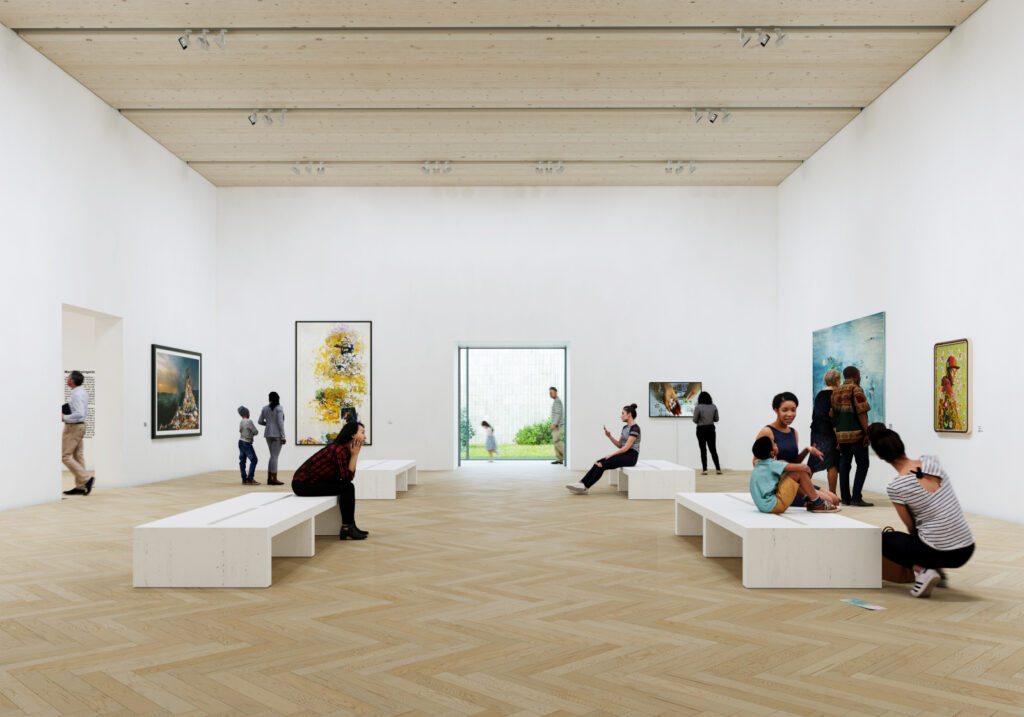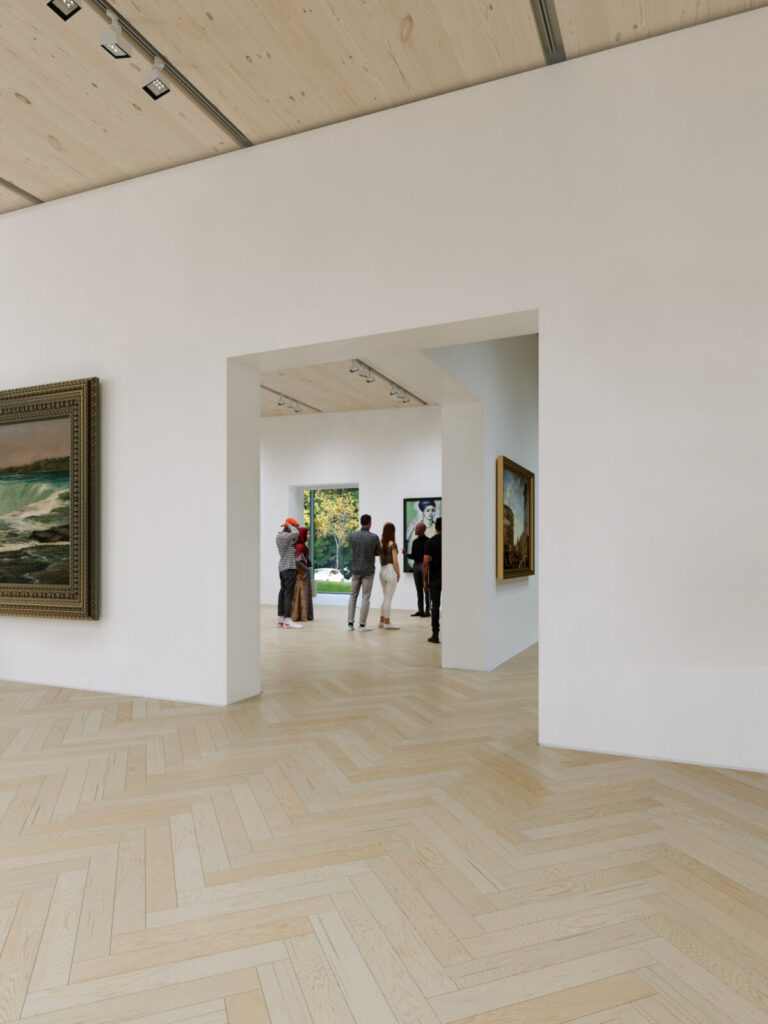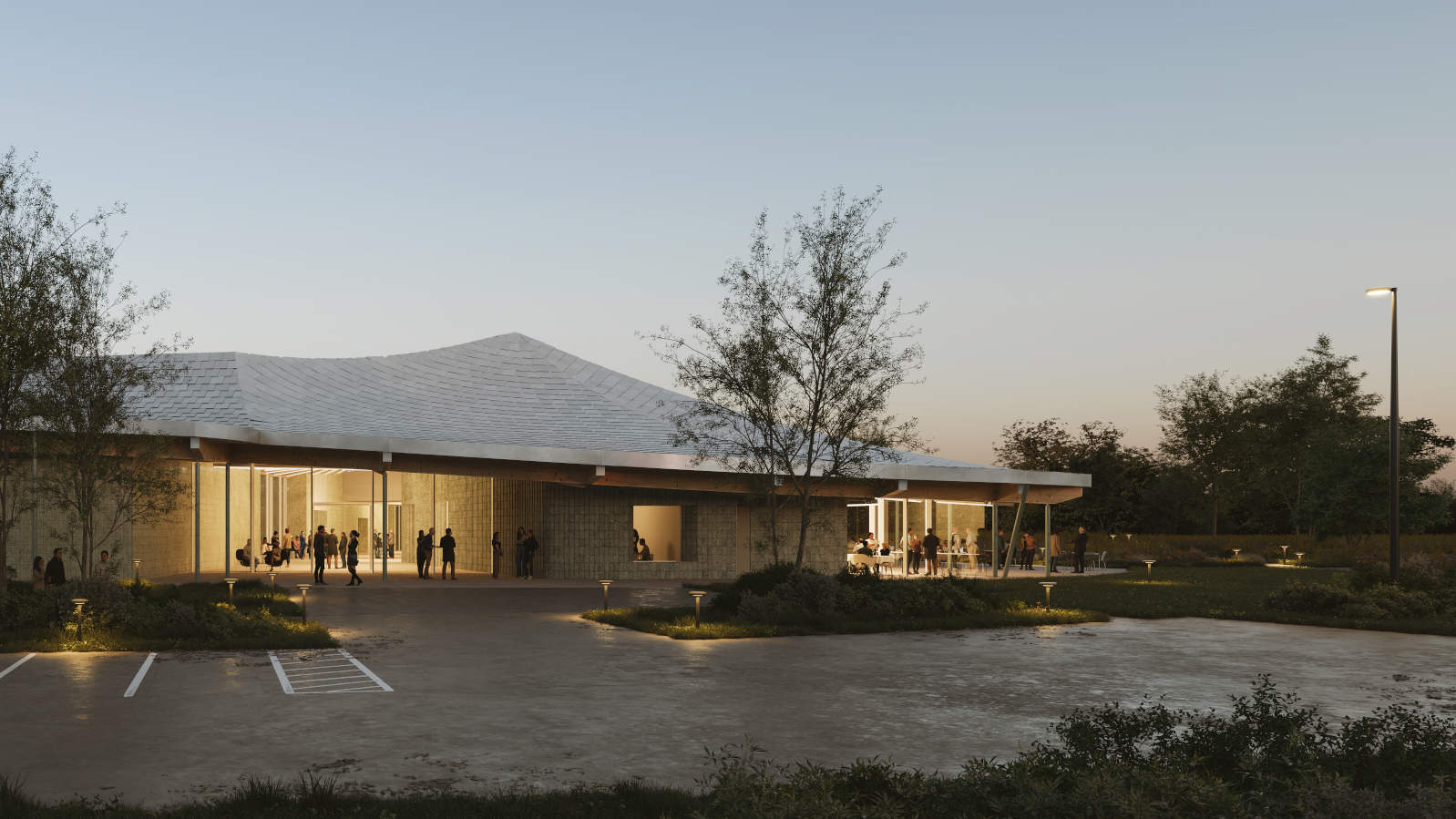The building flows in one wide story, with a ripping roofline that echoes the hills. You’ll walk up the path from wildflower meadows and restored woodlands.
Pamela Franks imagines outdoor sculptures here, like Rose B. Simpson’s Counterculture, her row of tall women made of clay who stood in the tall grass at Field Farm looking east with the sky in their eyes. Franks went up to see them on summer nights, she said, and the meadow was dancing with fireflies.
In this new space, she imagines walking across a stone patio and into open gallery. A central courtyard will seed natural light through the spaces around it.
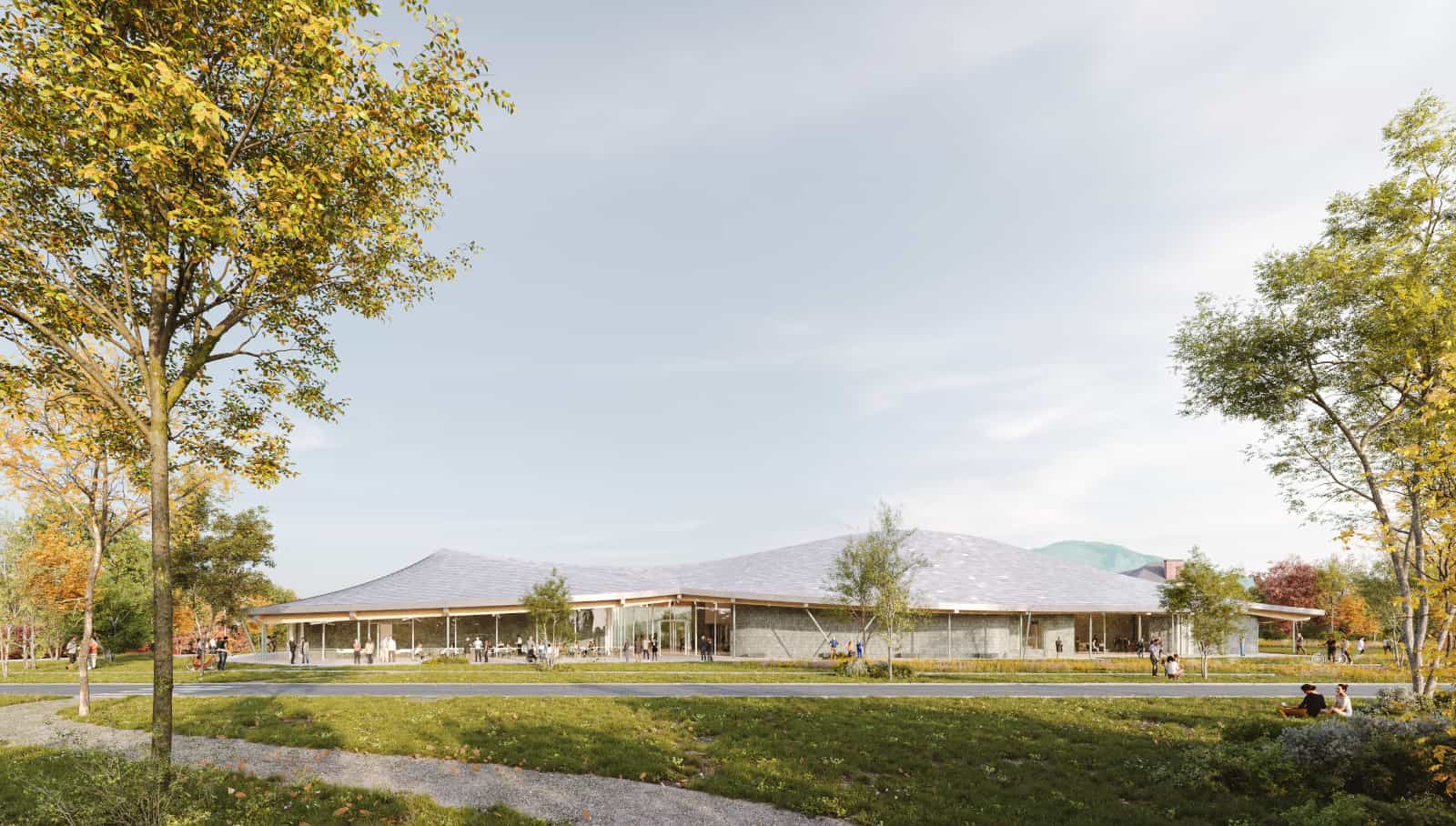
A rendering from Brooklyn architectural firm SO-IL imagines the new Williams College Museum of Art — which has not yet been built — as it can look from the south with a view across the meadow. Press photo courtesy of WCMA
“It’s amazing,” she said on a raw spring morning, “how bright the future looks right now.”
As director of the Williams College Museum of Art, she is envisioning the museum grown in a new shape, from the ground up. After more than three years of work, the Williams College Museum of Art has revealed plans for the museum’s new campus, at the site of the former Williams Inn, off the circle at Route 2 and Route 7.
Franks spoke in a community forum at the new Williams Inn on Spring Street with architects from SO–IL, an internationally recognized Brooklyn firm led by Florian Idenburg and Jing Liu, and later in her office at WCMA.
The new museum is set to open in 2026-2027, she said — in time for WCMA’s 100th anniversary. Since 1926, it has lived and grown into Lawrence Hall, the octagonal brick building at the eastern edge of campus, first built as the college’s library.
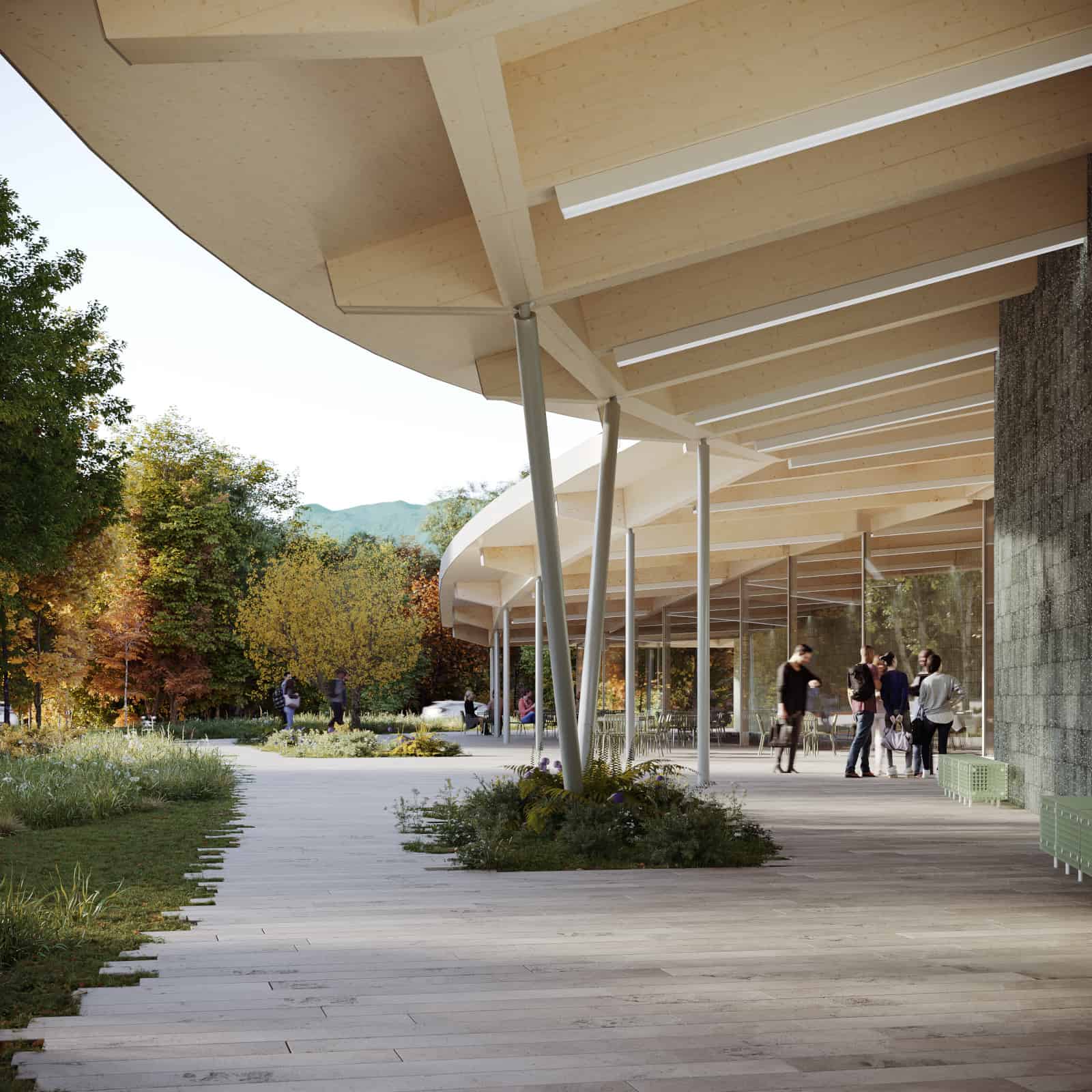
A rendering from Brooklyn architectural firm SO-IL imagines the new Williams College Museum of Art — which has not yet been built — as it can look from the wide porch at the entrance in the fall. Press photo courtesy of WCMA
The museum has outgrown that space long ago, she said, and at the same time, ideas of what a museum is … have continued to change and deepen. The new museum will have twice as much space to show artwork, she said — 15,000 feet of gallery space in 52,000 feet, and more room to explore the 15,000 works in the collection.
She finds the new design stunningly beautiful, wood floors and ceilings, and space to hold work like the recent gift of a vast and vivid mural by Williams alum and internationally acclaimed artist Meleko Mokgosi.
Over the past century, the museum has had time to grow, Franks said, and especially recently to diversify, as curators have the freedom to make careful choices. They have been able to grow relationships and define focuses in the collection.
Today, Asian American art has drawn a deepening awareness on campus, she said, especially now — since the college has approved an Asian American Studies Program in fall 2022, after more than 30 years of student activism.
The curators are interested in historic Japanese prints, she said, and the museum also has a collection of South Asian art that Williams art professor and artist Murad Mumtaz has praised for its depth, and a growing collection of contemporary African American art, including photographs by Carrie Mae Weems and James Van der Zee, among many more. …
Now she imagines poets and composers responding to them. The new design has carefully configured spaces to have good acoustics, she said, and to offer flexible room for programming.
The design grows from a long history of collaborations and performances — over the years WCMA has worked with Williamstown Theatre Festival actors, Museum Hack artists and dancers and choreographers from Jacob’s Pillow, among many others, as well as with the college’s theater and dance departments.

A rendering from Brooklyn architectural firm SO-IL imagines the new Williams College Museum of Art — which has not yet been built — with sunlight illuminating a gallery of bright paintings. Press photo courtesy of WCMA
In the past few years, Lama Tashi Norbu has walked into the galleries in the current building, chanting Tibetan music in a joyful tenor. James & Jerome have blended music and storytelling performance of Ink ,and Véronëque Ignace and Kriyol Dance have performed to live drumming in Raisin San Bout (endless roots in Haitian Creole).
In the new museum, a café and an auditorium hold space for performances, artist talks and films, and so do the galleries and in meeting places between them. One of their primary architectural ideas from the beginning, said said Jonathan Malloy from SO-IL, has been bringing people together and creating spaces that are welcoming and fluid.
He shows renderings of the new museum — imagined images with photographic clarity.
Glass walls give views of the hills. A wide lobby leads into a central courtyard, and openings bring sunlight even into more enclosed and internal spaces.

A rendering from Brooklyn architectural firm SO-IL imagines the new Williams College Museum of Art — which has not yet been built — with students meeting in the study center. Press photo courtesy of WCMA
And doorways often meet in intersections. Rather than one clear linear path, hubs open into several rooms and inviting people to choose where they want to move next.
Museums often have a focus on walls, he said, to have space to hold objects, but walls also separate people. They wanted this plan to feel more open. SO-IL have focused on the roof.
One large structure gathers together a set of pavilions and rings them with overhangs, porches and spaces that move between inside and outside. And in the gallery spaces, the roof is made of wood. To be sustainable, he said, it is made of smaller sections fitted together.
“It’s not in the way it used to be,” he said, “when wooden structures were made with huge old trees. These are laminate, and they perform on a level with steel and concrete.”
As he and his colleagues at SO-IL present the plans, they and landscape architects Reed Hilderbrand have kept sustainability and ecological health at the center of their thinking. The new building, he says, will need 30 percent of the energy the museum uses now.
‘We are restoring ecology. The land has gone through difficult transitions over the last 150 years and needs to be brought to ecological health.’ — Jonathan Malloy, SO-IL
Following the International Future Living Initiative, they have set out standards for core sustainability, including water, plantings, the environment and ecology, wildlife and native plants.
“We are restoring ecology,” Malloy said. “The land has gone through difficult transitions over the last 150 years and needs to be brought to ecological health.”
They plan to reforest wooded places with native trees, he said, and with some that are not native now but may be more resilient to the warming climate over the next 50 years and more. They are planning for the health of the earth and water.
As people move freely from inside to outside, they can sit in the shade of evergreens in the inner courtyard, take in the color and scent of welcoming gardens of perennials, and walk into a wildflower meadow alive with butterflies.
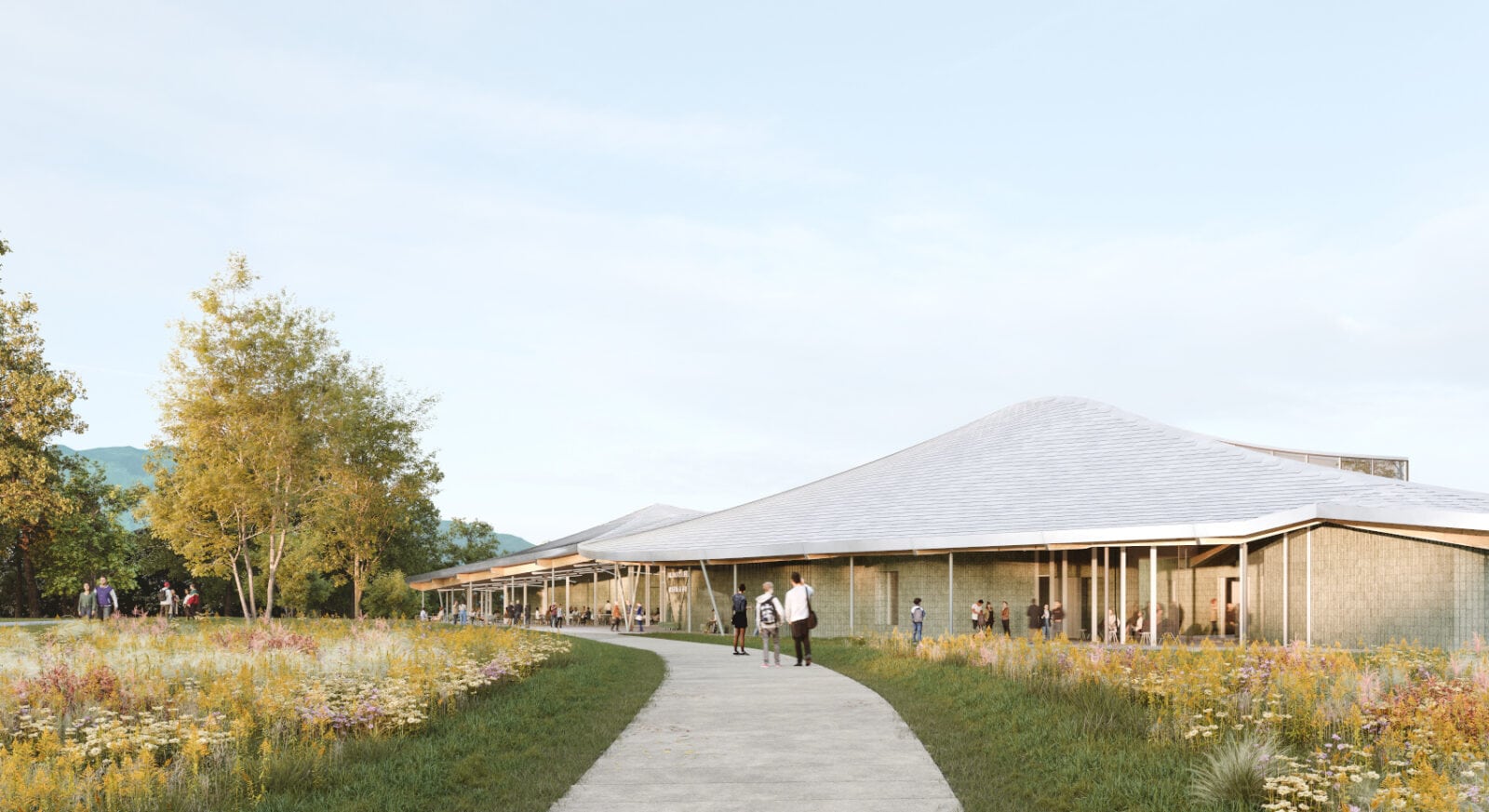
A rendering from Brooklyn architectural firm SO-IL imagines the new Williams College Museum of Art — which has not yet been built — as it can look from the south with a view across the meadow. Press photo courtesy of WCMA
Teaching through art
The new design for the Williams College Museum of Art also makes more room available for professors and students, says WCMA director Pamela Franks — studio space, classrooms and study center, and the Object Lab where professors can co-curate exhibits to show their classes.
“It’s important for the college,” she said, “because teaching with art is at the center of what we do.”
Classes in every department are coming to the museum to learn, she said — walking through the Object Lab galleries today, they can see artwork related to math, Latinx studies, literature …
Over the past 20 to 30 years, she said, the range of faculty who want to teach with the collection has grown exponentially, and the museum has more requests than they can cover.
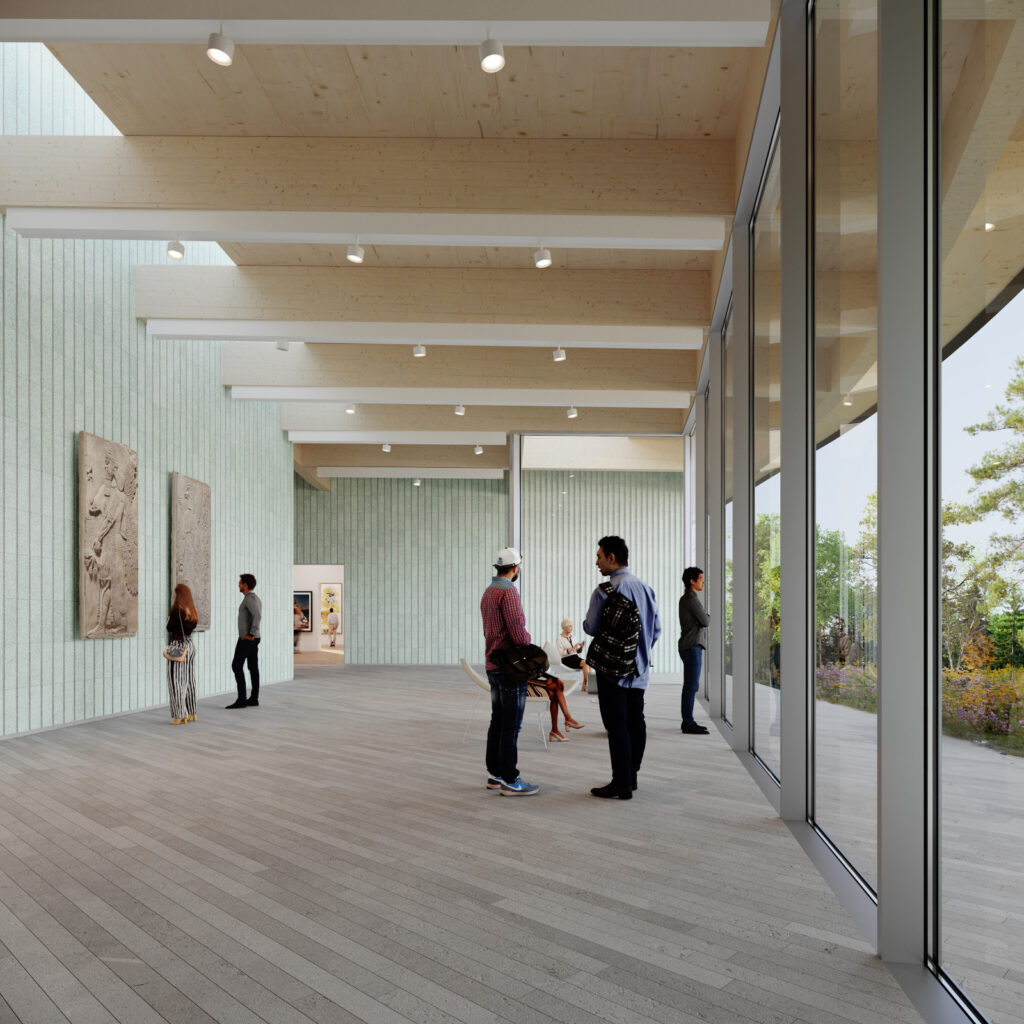
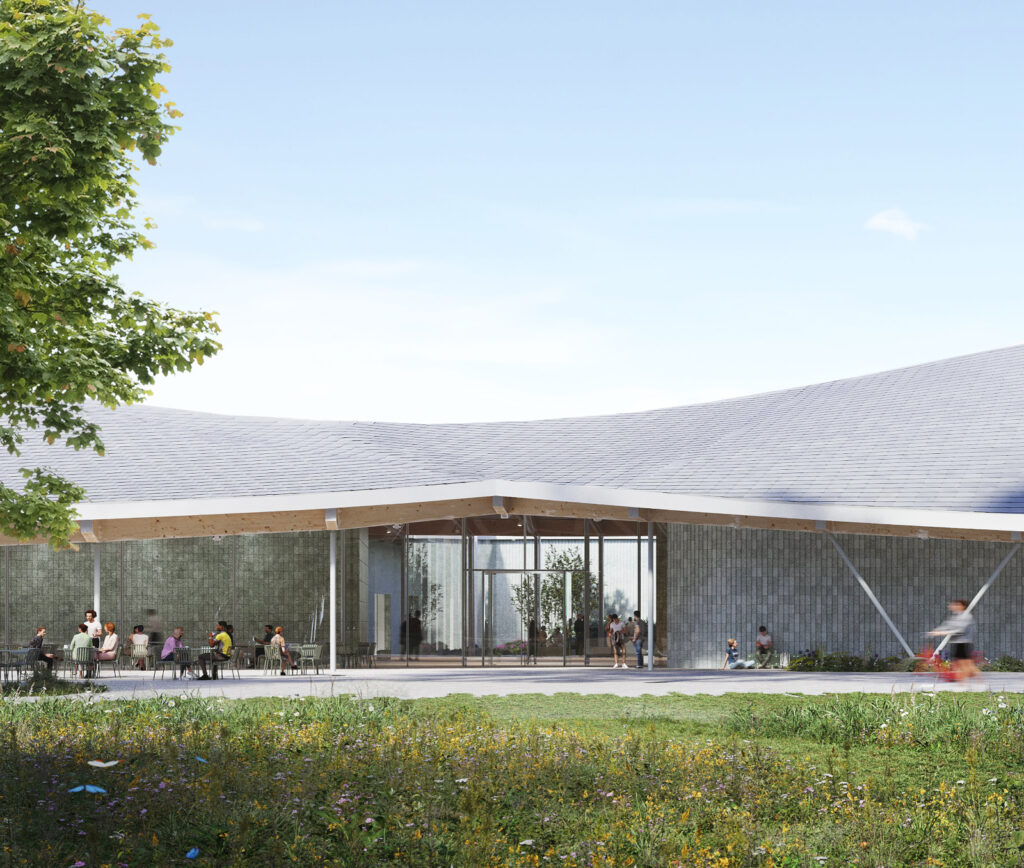
And the new space will give new tools to learn about the collection. Expanded storage will make those 15,000 objects easier to reach. And new research spaces and a digital humanities classroom will give students, professors and the community new ways to understand them.
Digitizing the collection(s) will mean people can search and see what the museum holds, Franks said, and share knowledge and experience. Visiting scholar Christa Clarke, an independent scholar and curator, is a specialist in historic and contemporary arts of global Africa, has recently spent time with more than 250 works of art in the museum’s African collection.
The new space will give them more room to learn more about the works they preserve, Franks said, and to let the community know about them, both historical and contemporary art.
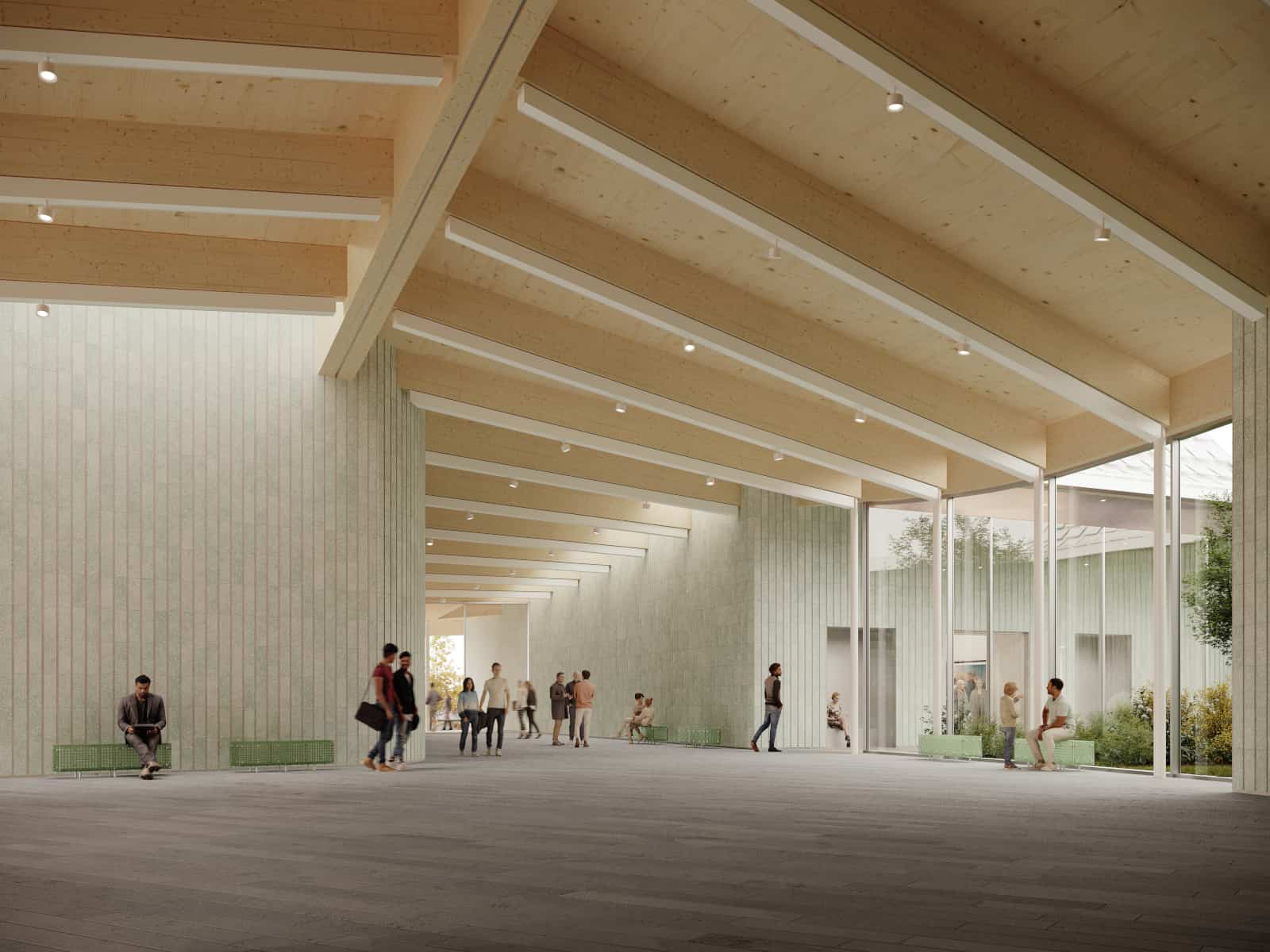
A rendering from Brooklyn architectural firm SO-IL imagines the new Williams College Museum of Art as people meet in a wide lobby on the edge of indoors and outside. Press photo courtesy of WCMA
The museums holdings can surprise people, she said, and the collection is growing by as many as 200 new works in a year. Reflecting on one of the newest, she recalls Hung Liu’s ‘Women of Color’ — hanging now in a gallery of Asian American art in the current museum, in the room beside their newly opened show, Emancipation: The Unfinished Project of Liberation.
Four women stand shoulder to shoulder in a landscape as vivid as red sandstone.
Liu painted in tribute, in 1991, after she returned to China, where she was born, for the first time since she had come to live in California.
‘In my work,’ she writes beside them, ‘I want to restore dignity.’
